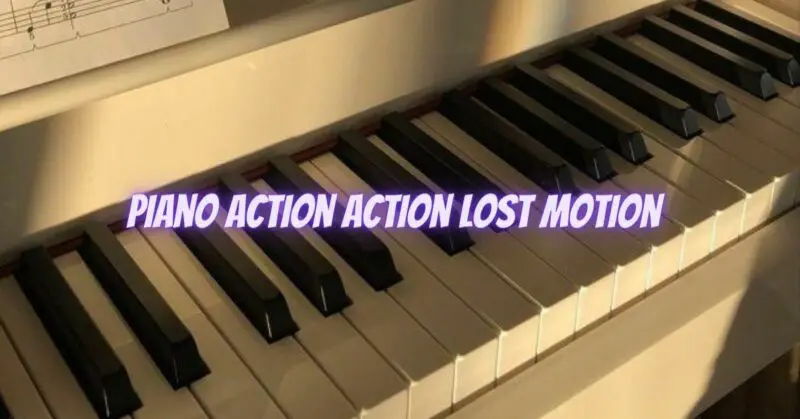In the world of piano mechanics, “lost motion” refers to the small amount of space or “play” present between the various components of the piano action before the hammer actually engages with the strings. Lost motion is a natural phenomenon, but excessive lost motion can negatively impact the playability and responsiveness of the piano. Understanding the concept of lost motion and how to address it is crucial for maintaining a well-regulated and efficient piano action.
What Causes Lost Motion?
Lost motion occurs due to the wear and tear of various parts of the piano action over time. The primary components contributing to lost motion include:
- Knuckles: The knuckles are the pivot points that connect the piano keys to the piano action. With repeated use, the knuckles can develop slight gaps or spaces, leading to lost motion.
- Hammer Flanges: The hammer flanges are the thin, flexible strips that allow the hammers to move vertically. Over time, the flanges can become worn or compressed, resulting in increased lost motion.
- Center Pin Bushings: The center pin bushings, located in the keyframe, support the pivot pins. Gradual wear of the center pin bushings can lead to lost motion.
Effects of Excessive Lost Motion:
- Lack of Control: Excessive lost motion can lead to a lack of control over the piano action. The pianist may feel that the keys are not responding as expected, affecting their ability to play with precision and dynamics.
- Inconsistent Touch: Uneven lost motion across the keyboard can cause some keys to feel heavier or lighter than others, leading to an inconsistent touch and feel.
- Difficulty in Expression: The pianist’s ability to express musical nuances can be compromised due to the unpredictable response of the piano action caused by excessive lost motion.
Addressing Lost Motion:
Addressing lost motion requires the skills of a qualified piano technician. The technician will:
- Evaluate the Piano Action: The technician will inspect the piano action and measure the lost motion in each key.
- Adjusting the Components: The technician will make necessary adjustments to the hammer flanges, knuckles, and center pin bushings to reduce lost motion.
- Regulation: After addressing the lost motion, the piano action will undergo regulation, ensuring that each key’s response is even and consistent.
Regular Maintenance:
To prevent excessive lost motion and maintain the piano’s playability, regular maintenance is essential. Routine tuning and servicing by a skilled piano technician will help keep the piano action in optimal condition.
Conclusion:
Lost motion is a natural part of a piano action’s wear and tear. While some lost motion is expected, excessive lost motion can significantly impact the piano’s playability and responsiveness. Addressing lost motion through proper adjustments and regulation is key to maintaining a well-functioning piano action, ensuring that pianists can enjoy a responsive and expressive instrument. Regular maintenance and timely adjustments by a professional piano technician will help preserve the piano’s performance and playability for years to come.

